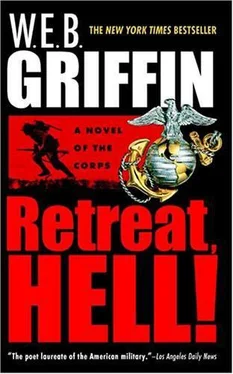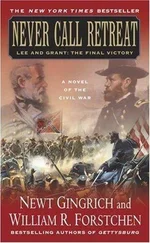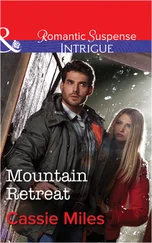Just about as soon as they were out of the harbor and the LST's skipper, Lieutenant John X. McNear, USNR, had time for a little chat, he told Dun-wood three things.
First, that he was, like Dunwood, a reserve officer involuntarily called up for Korea (he had been the golf professional at Happy Hollow Country Club, Phoenix, Arizona). Second, that he had just now sailed LST-450 from Bremerton, Washington, where she had been mothballed. And third, that they were now headed for Sasebo, not Yokohama. He said he had learned that only when he opened a sealed envelope on which was typed "OPEN ONLY WHEN AT SEA," and he hadn't any idea what was going on.
Dunwood had searched his mind for a possible explanation and had come up with very little, except the possibility that Baker Company would be reequipped and brought up to authorized strength at Sasebo.
When they got to Sasebo, Dunwood quickly learned that was not to be the case.- Baker Company, the lieutenant colonel in charge of a team from 1st Marine Division Headquarters told him, had been selected for a "special mission of crucial importance to the landing at Inchon."
The lieutenant colonel made it sound like an honor. Dunwood's experience as a Marine made him suspect it was a euphemistic description of a mission that would get a lot of Marines—probably including him—killed.
Baker Company was shortly thereafter assembled in the gymnasium of the U.S. Naval Base, Sasebo, where, after the windows were covered and guards posted at the doors, the colonel described their mission to them.
It seemed that to reach the landing beaches at Inchon, the invasion fleet would have to traverse the thirty-odd-mile-long Flying Fish Channel. In the channel were a number of islands, two of which, Taemuui-do and Yonghung-do, had to be invested and neutralized twenty-four hours before the invasion fleet arrived, otherwise the enemy could blow large holes in the sides of the transports with ordinary field artillery.
Baker Company had been given the mission, the honor, of investing Taemuui-do and Yonghung-do. Before they landed on the islands from Higgins boats, the islands would of course be subject to an enormous barrage of naval gunfire, which would effectively reduce to minimal the enemy's ability to resist Baker Company's invasion.
Actually, from that perspective, the colonel said, the real mission of Baker Company would be to occupy the two islands and prevent the enemy from coming back and bringing more artillery with them.
Captain Dunwood had gone ashore at Tarawa and Iwo Jima, on each occasion having been assured that following the massive preinvasion barrages of naval artillery to be laid on those islands, resistance would be minimal. That assurance had turned out to be bullshit, and he had therefore concluded that it was logical to presume this one was, too, and that Baker Company had just been handed the short end of the stick.
But he was a Marine, and Marines go where they are ordered to go, and he was a Marine officer, and Marine officers do whatever is humanly possible to reduce Marine losses by the only means that has ever looked like it works— training and more training.
By the time Baker Company reboarded LST-450, Captain Dunwood was sure that ninety-five percent of his Marines hated him for the regimen of training they had gone through under his command. And he was also sure that he had trained them as well and as thoroughly as he knew how, and that would probably result in fewer KIA and WIA than otherwise would have occurred.
At 0415 14 September, as the schedule called for, LST-450 was at the mouth of the Flying Fish Channel, preparing to load the men of Baker Company aboard the Higgins boats for their assault on Taemuui-do and Yonghung-do islands.
Every ear, of course, was listening for the thunder, and every eye the flash, of the massive naval gunfire bombardment that was going to reduce the potential of the North Koreans to repel their assault to minimal. That was scheduled to begin at 0415 and last for a half hour.
At 0445, when Baker Company's Higgins boats were scheduled to depart LST-450 for the beaches of the islands, they were still listening, in vain. There had been some kind of a fuckup, obviously, and there wasn't going to be any massive barrage of naval gunfire.
Or, possibly, Captain Dunwood had thought privately, some candy-ass chair-warming swabbie clerk-typist had made a little mistake typing the order — hitting the "5" instead of the "4" — and there would be a massive barrage of naval gunfire landing on Taemuui-do and Yonghung-do starting at 0515, five minutes after the first Higgins boat touched the shore, and Baker Company would be up to its ass in angry North Koreans.
Marines go where they are ordered to go, with or without massive barrages of naval gunfire to reduce opposition to the minimum.
At 0510, on schedule, the first Higgins boat transporting Baker Company to the Flying Fish Channel Islands touched ashore and dropped its ramp.
Marines ran down the ramp and turned right and left, spreading out, weapons at the ready. Captain Dunwood was in the center of what ultimately was a formation in the shape of a V, holding his carbine in one hand.
"Hold your fire! Hold your fire!" a voice shouted, an obviously American voice.
A figure appeared. He was in black cotton pajamas and had a band of the same material around his forehead. He held his hands over his head in a gesture of surrender.
It soon became apparent that the Marines Had Landed and the situation was well in hand. The first landing had occurred before—long before, weeks before—Baker Company of the 5th Marines had arrived.
The character in the black pajamas was a technical sergeant named Jennings. The second character to appear in black pajamas had identified himself as Captain K. R. McCoy, USMCR, and he said he was "in charge of the operation."
At about that moment—just as Dunwood was trying to reconcile McCoy with some candy-ass Marine he'd clashed with on a plane—the skies lit up and the earth trembled as a massive barrage of naval gunfire began. It flew overhead to land on Wolmi-do Island, miles farther down the Flying Fish Channel.
Captain McCoy explained to Captain Dunwood that the real role of Baker Company in the Inchon Invasion was to retake Taemuui-do and Yonghung-do islands in case something happened to him and his men.
Captain McCoy and his handful of men—some of them Korean—had then gotten into Baker Company's Higgins boats and left. Dunwood never had time to ask Captain McCoy what he was supposed to do next, or even to which Marine unit he belonged, or what was the reason for the black pajamas.
Two days later, other Higgins boats appeared at the island, under a Navy chief bosun's mate who knew only that he had been ordered to the island to pick up Baker Company and transport them to Inchon.
At Inchon, which had just been taken, Baker Company was placed in Division Special Reserve and Dunwood was shown where to bivouac and told to be prepared to move out on twenty minutes' notice.
No such notice ever came, and it had not been necessary for Baker Company to fire a shot. Or, for that matter, to dodge any.
After five days in Division Special Reserve, half a company of amphibious trucks had come to their bivouac area under an old gunnery sergeant who reported that all Captain Strauley had told him was that he was to haul Baker Company to Kimpo Airfield.
By the time they reached Kimpo, the war had moved past the airfield. It was already in use.
Sergeant Preston had come to him within an hour, saying that he'd reconnoitered the field and found a hangar at the far end that was neither in use nor too badly shot up, and why didn't they take it over?
Читать дальше












